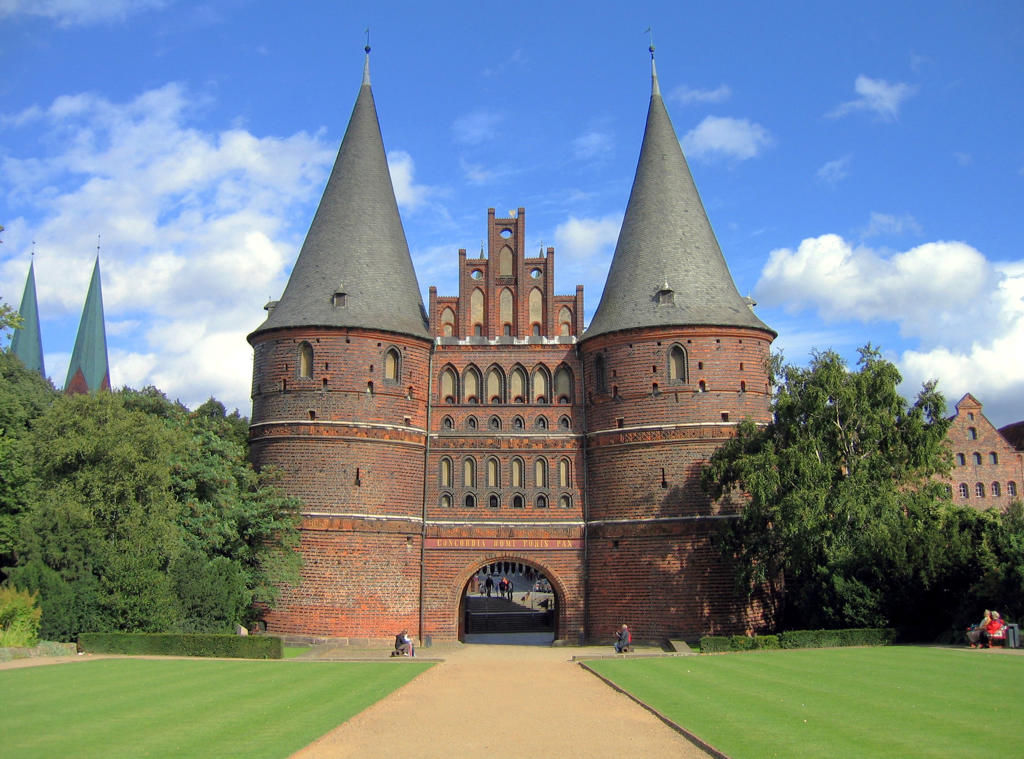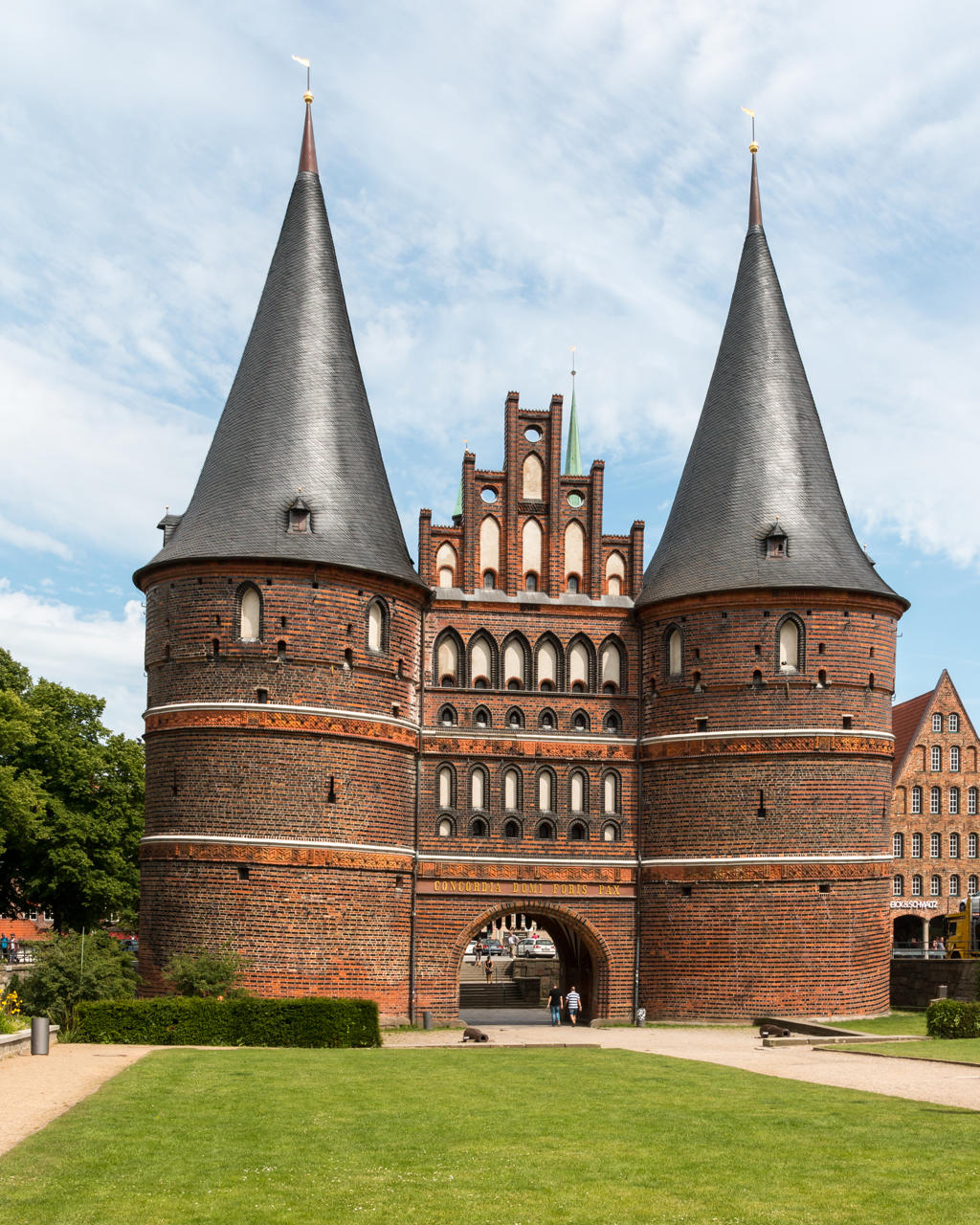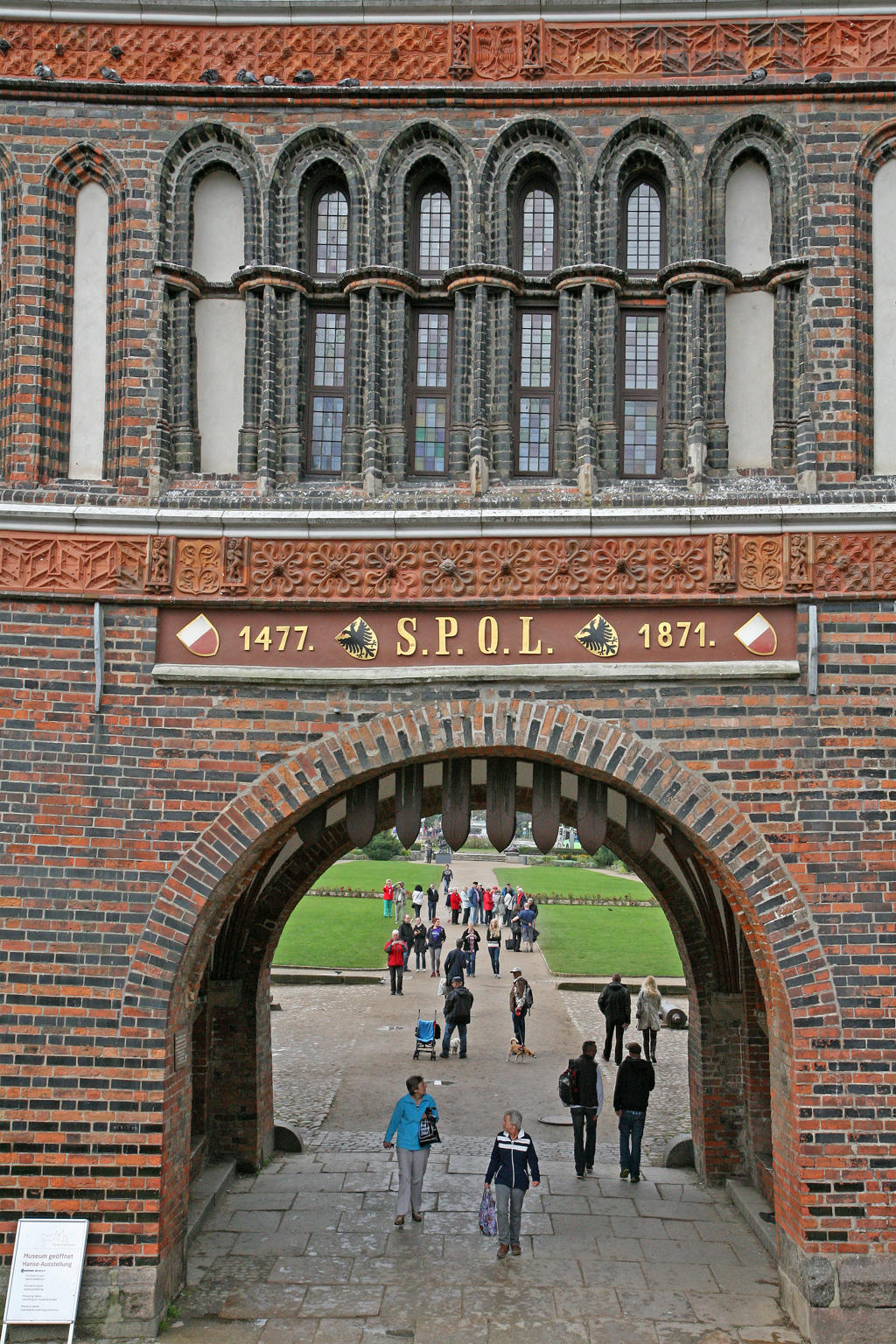About Holstentor
The twin towers of the Holsten Gate rise dramatically, their red brick walls sloping inward as if leaning under the weight of history. Between them, the arched gateway bears the Latin inscription "CONCORDIA DOMI FORIS PAX," meaning "Harmony within, Peace without." The Gothic architecture, with its pointed arches and decorative brickwork, creates a striking image of medieval strength and elegance. The gate’s slightly uneven structure, a result of centuries of settling, adds to its charm and authenticity.
Built in 1464, the Holsten Gate served as a symbol of Lübeck’s wealth and power during its time as a leading member of the Hanseatic League. It was part of the city’s fortifications, protecting Lübeck from invaders while showcasing its architectural prowess. Today, the gate stands as one of Germany’s most famous landmarks, representing the city’s rich maritime and trading history.
Marks of Time
The Holsten Gate’s brick façade reveals the passage of time. Look closely at the intricate patterns formed by glazed bricks, a hallmark of North German Brick Gothic style. The towers, slightly tilted due to the soft marshy ground beneath, tell a story of resilience. Inside, the gate houses a museum that explores Lübeck’s history, offering visitors a chance to connect with the city’s past through artifacts and exhibits.
Plan your perfect trip to Lübeck with Travo! Download now and start exploring.
Stories in Stone
The gate’s design reflects both function and symbolism. The narrow windows served as defensive openings for archers, while the imposing towers intimidated potential attackers. The Latin inscription above the archway speaks to Lübeck’s aspirations for peace and unity, ideals that were central to the Hanseatic League’s mission. The Holsten Gate was not just a fortification but a statement of Lübeck’s prominence in medieval Europe.
Living History
Today, the Holsten Gate is a beloved icon of Lübeck, featured on everything from postcards to the city’s coat of arms. Visitors gather here to admire its architecture, take photos, and learn about its role in Lübeck’s rise as a trading powerhouse. The surrounding area, with its cobblestone streets and historic buildings, enhances the experience, transporting visitors back to the city’s medieval heyday.
Details That Speak
Notice the decorative shields on the gate’s façade, representing Lübeck and the Hanseatic League. The pointed arches and stepped gables are classic features of Gothic architecture, while the glazed bricks add a touch of refinement. The uneven tilt of the towers is a reminder of the challenges faced by medieval builders, who worked without modern engineering tools yet created structures that have endured for centuries.
Present-Day Significance
The Holsten Gate is more than a historical relic; it’s a symbol of Lübeck’s identity. As a UNESCO World Heritage Site, it attracts visitors from around the world, serving as a gateway to the city’s rich cultural and architectural heritage. Whether you’re exploring the museum inside or simply admiring its grandeur from the outside, the Holsten Gate offers a tangible connection to Lübeck’s storied past and its enduring legacy.




Map loading...
Location
Holstentorplatz, 23552, Lübeck
